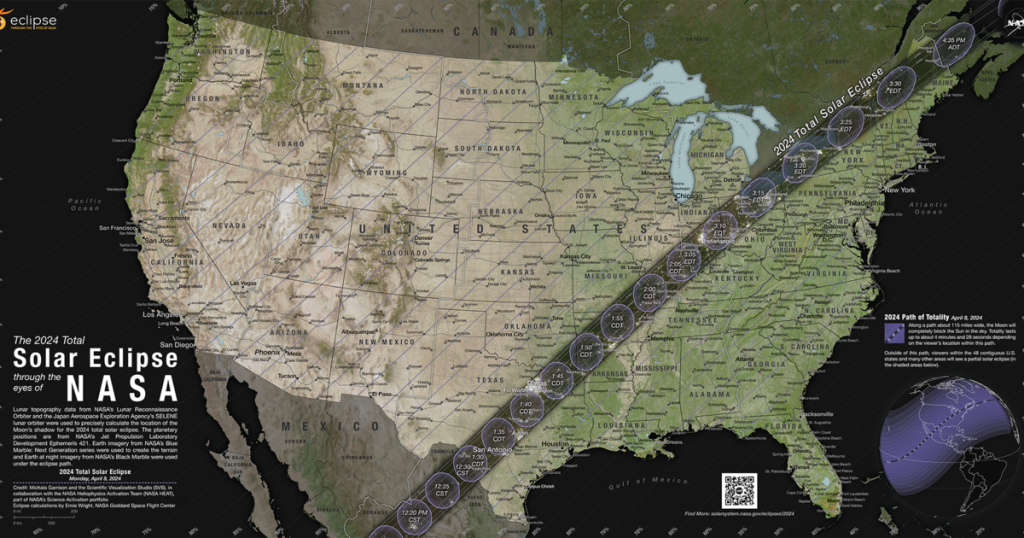On April 8, 2024, a total solar eclipse will cross North America, with parts of 15 U.S. states within the path of totality. Maps have been released showing where and when astronomy fans can experience this rare event. The total eclipse will first appear along Mexico’s Pacific Coast and travel across the U.S. from Texas to Maine and into Canada. The path of totality will cover 108 to 122 miles wide and include about 31.6 million people, with an additional 150 million people living within 200 miles of the path.
The total solar eclipse will start over the Pacific Ocean and reach Mexico’s Pacific Coast around 11:07 a.m. PDT before moving through Texas and several states before entering Canada. The eclipse will end in Newfoundland, Canada, around 5:16 p.m. NDT. The path of totality will include states such as Texas, Oklahoma, Indiana, Ohio, New York, Vermont, and others. Small parts of Tennessee and Michigan will also experience the total solar eclipse. Several major cities, such as San Antonio, Austin, Dallas, Indianapolis, and Cleveland, will be under the path of totality, while others will see a partial eclipse.
NASA has shared a map showing the path of totality for the April 8, 2024 eclipse. The eclipse will begin in the U.S. in the afternoon, and viewers can check times for specific cities on NASA’s map. Those outside the path of totality may still see a partial eclipse, where the moon covers most, but not all, of the sun. NASA provides a tool for viewers to input their ZIP code to see how much of the sun will be covered in their location. The eclipse will last for different durations in various places, with some locations experiencing totality for up to 4 minutes and 28 seconds.
After the 2024 eclipse, the next total solar eclipse visible from the contiguous U.S. will be on August 23, 2044. The path of totality for the 2044 eclipse will only touch three states, starting in Greenland, passing over Canada, and ending as the sun sets in Montana, North Dakota, and South Dakota. While NASA has not released maps for the 2044 eclipse yet, astronomy fans will have fewer opportunities to see this event compared to the one in 2024. The 2024 eclipse is expected to be a significant event for skywatchers across the country, with millions of people able to witness this awe-inspiring phenomenon.


